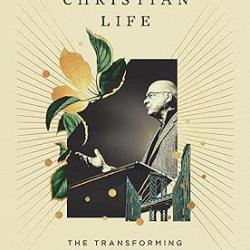This post is part of a series walking through the first volume of Abraham Kuyper’s Common Grace.
Contrary to our usual assumptions, Kuyper thinks that Abraham was not called to a life of isolation. Rather, he was called to a life involved with the world around him. This web of connections in which he lived his life formed a part of the blessing promised to the nations through him. We assume that in being called out of the cultures of idolatry he lived in a purified seclusion. Yet in reality, he didn’t even escape the culture of idolatry. These cultures dominated the whole world in any case. The geographical shift in focus from Central Asia to the Levant is a change in place and a new land, but not an escape from idolatrous surrounding nations.
However, Kuyper doesn’t mean to imply that there is no separation between Abraham and the world. He simply means that it is not a total separation from all around him. We see this in the example of Lot, and later with Moab and Ammon. Human bonds of relationship remain despite differences of religious or national bonds. Even Ishmael and his descendants show that Abraham saw a role for natural connections in his life.
“Their [Abraham’s and Sarah’s] sin is commonly sought in that they resorted to an Egyptian woman, as if their sin would have been less serious had they taken a Semitic slave woman. No, their sin of unbelief consisted exclusively in this, that they took God’s work out of his hands and did not leave the implementation of his promise to him. But the choice of an Egyptian woman as such is not in the least branded as sin. To the contrary, it is this Egyptian slave woman who in fact receives the first appearance of the Messiah. [Genesis 16 may be what Kuyper has in mind here]” (387)
Abraham’s sin was in preempting God’s divine plan, not in caring for his child or in involving an Egyptian. Again, cultural and social isolation is not what Abraham is called to.
Kuyper thinks that the fact that Isaac’s and Ishmael’s descendants continue to fight shows that total separation could not have been the goal. Why fight if you’re just supposed to stay away from each other? It’s probably helpful for us to remember that Kuyper was writing half a century before the creation of the modern nation of Israel in 1948…
Esau also shows the organic unity of the nations of the world. In fact, Edom is a better example in many was in these other nations (Moab, Ammon, the Ishmaelites) were in some ways born in sin. Esau was naturally born by normal and non-sinful means. And though he was predestined to rebel he is still related to the family of Abraham. The same is true, albeit to a lesser extent, of Midian and the Midianites.
In addition to all of these biological connections, we also see that Abraham formed alliances and webs of obligations in the region. He has involved in regional geopolitics (not always to his credit, of course), and got along in the land. He may even have used these alliances as opportunities to spread God’s Word–though we wouldn’t want o push that too hard.
All of this to say that Abraham led no hermetic or monastic life. He was involved in the affairs of the world and steeped in the culture, if not the religion, of his time and place.
But what about the religious aspect of Abraham’s life? The next chapter engages the relationship between Abraham and Melchizedek.
Dr. Coyle Neal is co-host of the City of Man Podcast and an Associate Professor of Political Science at Southwest Baptist University in Bolivar, MO












